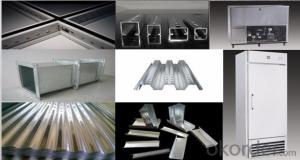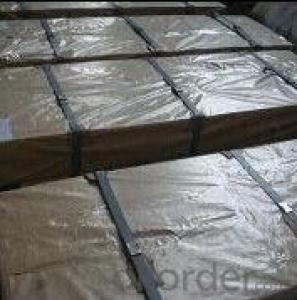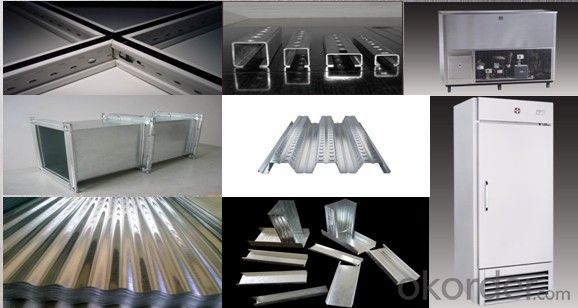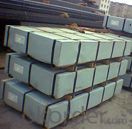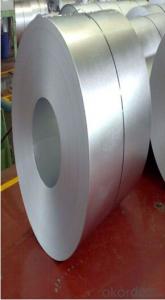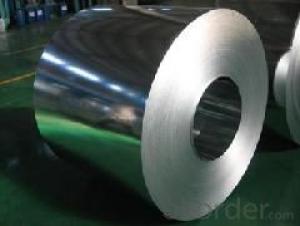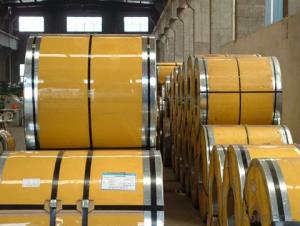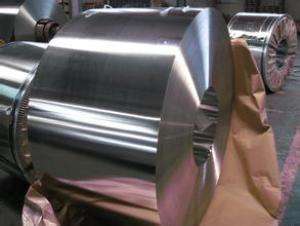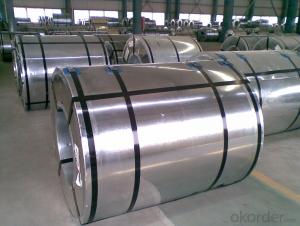Hot Dip Galvanized Steel Sheets Good Quality
- Loading Port:
- Tianjin
- Payment Terms:
- TT OR LC
- Min Order Qty:
- 25 m.t.
- Supply Capability:
- 10000 m.t./month
OKorder Service Pledge
OKorder Financial Service
You Might Also Like
1.Structure of Hot Dip Galvanized Steel Sheets Good Quality Description:
Hot-dip galvanized steel coils are available with a pure zinc coating through the hot-dip galvanizing process. It offers the economy, strength and formability of steel combined with the corrosion resistance of zinc. The hot-dip process is the process by which steel gets coated in layers of zinc to protect against rust. It is especially useful for countless outdoor and industrial applications. Production of cold formed corrugated sheets and profiles for roofing, cladding, decking, tiles, sandwich walls, rainwater protective systems, air conditioning duct as well as electrical appliances and engineering.
2.Main Features of the Hot Dip Galvanized Steel Sheets Good Quality:
• Excellent process capability
• Smooth and flat surface
• Workability, durability
• Excellent anticorrosive property
• High strength
• Good formability
• Good visual effect
3.Hot Dip Galvanized Steel Sheets Good Quality Images
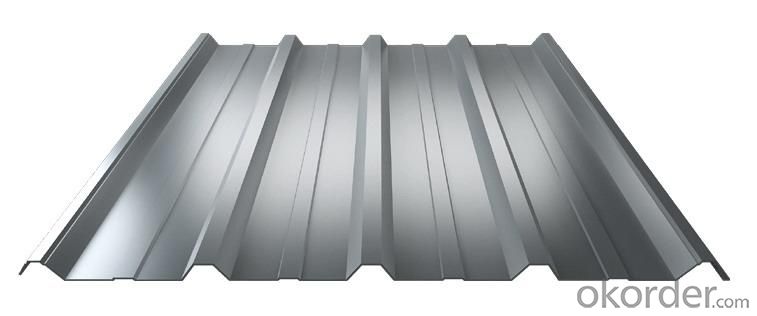
4.Hot Dip Galvanized Steel Sheets Good Quality Specification
Standard: ASTM, JIS,EN
Grade: CS, DX51D+Z,SGCC, SS 230~550,S220GD+Z~S550GD+Z, SGC340~SGC570
Thickness: 0.1mm~5mm
Width: max 2000mm
Coil weight:3-12 MT
Coil ID:508/610mm
Surface structure: zero spangle, regular spangle or minimum spangle
Surface treatment: Chromate treatment, Oiled/dry, skinpassed/non-skinpassed
Packing: Standard seaworthy export package
Technology test results:
Processability | Yield strength | Tensile strength | Elongation % | 180°cold-bending |
Common PV | - | 270-500 | - | d=0,intact,no zinc removal |
Mechanical interlocking JY | - | 270-500 | - | d=0,intact,no zinc removal |
Structure JG | >=240 | >=370 | >=18 | d=0,intact,no zinc removal |
Deep drawn SC | - | 270-380 | >=30 | d=0,intact,no zinc removal |
EDDQ SC | - | 270-380 | >=30 | d=0,intact,no zinc removal |
5.FAQ of Hot Dip Galvanized Steel Sheets Good Quality:
We have organized several common questions for our clients,may help you sincerely:
1.How about your company?
A world class manufacturer & supplier of castings forging in carbon steel and alloy steel,is one of the large-scale professional investment casting production bases in China,consisting of both casting foundry forging and machining factory. Annually more than 8000 tons Precision casting and forging parts are exported to markets in Europe,America and Japan. OEM casting and forging service available according to customer’s requirements.
2.How to guarantee the quality of the products?
We have established the international advanced quality management system,every link from raw material to final product we have strict quality test;We resolutely put an end to unqualified products flowing into the market. At the same time, we will provide necessary follow-up service assurance.
3. How long can we receive the product after purchase?
Usually within thirty working days after receiving buyer’s advance payment or LC. We will arrange the factory manufacturing as soon as possible. The cargo readiness usually takes 15-30 days, but the shipment will depend on the vessel situation.
4. How is made GI?
One of the most common ways of making steel resist rust is by combining (alloying) it with a metal that is less likely to corrode: zinc. When steel is submerged in melted zinc, a chemical reaction permanently bonds the zinc to the steel. Therefore, the zinc isn't exactly a sealer, like paint, because it doesn't just coat the other metal; it actually permanently becomes a part of it. The most external layer is all zinc, but successive layers are a mixture of zinc and iron, with an interior of pure steel.
- Q: What is the typical lead time for ordering steel coils?
- The typical lead time for ordering steel coils can vary depending on factors such as supplier availability, production capacity, and shipping logistics. However, it is common for lead times to range from a few weeks to a few months. It is important to communicate with the supplier directly to get an accurate estimate for the specific order.
- Q: What are the dimensions of a typical steel coil?
- The dimensions of a typical steel coil can vary depending on the manufacturer and specific application, but common dimensions include thicknesses ranging from 0.015 inches to 0.5 inches, widths between 24 inches and 72 inches, and coil weights ranging from a few thousand pounds to over 50,000 pounds.
- Q: Steel roofing info. Pros and cons on steel roofing?
- Steel roofing Pro...life of product is much longer then Asphalt shingles....Looks great...multi colors.......Just love the stuff... Cons....More costly then singles at first but since it last longer it is really a better buy.......
- Q: How are steel coils transported?
- Steel coils are typically transported using specialized trailers or railway cars. The coils are securely fastened to prevent movement during transportation and are often stacked to maximize space utilization.
- Q: hey i was looking to buy a khukuri machete by cas iberia. its made of carbon steel but doesnt say which one. anyone that is into knives and all that know how this would hold up and the rust resistance of it? mostly be used for cutting bush and small trees
- Ricki is correct. There is no way to tell how much carbon is present just from the term carbon steel. It comes in a wide range of grades within the general classifications of low, medium, and high carbon steel. What you'll get depends on the quality of the knife. As the carbon content increases, the steel becomes harder, stronger, and more responsive to heat treatment. It also becomes more brittle, so a **very** high carbon steel would not be the best thing for a machete. As Ricki said, plain carbon steels are not rust resistant. However, I have had a carbon steel machete for over 40 years and it's just fine. If you take care of it, it will last.
- Q: What is the tensile strength of a steel coil?
- The maximum stress or force that a steel coil can endure before breaking or undergoing permanent deformation is known as its tensile strength. This property measures the coil's capacity to withstand stretching or pulling apart. The specific tensile strength of a steel coil can vary based on factors such as the type and grade of steel used, the manufacturing process, and any additional treatments or coatings applied. Typically, steel coils exhibit high tensile strength, which falls within the range of 300 to 2,000 megapascals (MPa). When considering the suitability of a steel coil for applications in industries like construction, automotive, or manufacturing, the tensile strength is a crucial factor to take into account.
- Q: What are the common problems encountered with steel coils during production?
- Some common problems encountered with steel coils during production include surface defects such as scratches, rust, and scale formation, dimensional deviations, coil breaks or tears, edge defects, and coil slippage. Other issues may include coil handling and storage problems, coil winding or coiling defects, and quality control problems such as inconsistent chemical composition or mechanical properties.
- Q: What are the different methods of forming steel coils into sheets?
- There are several methods of forming steel coils into sheets, including hot rolling, cold rolling, and annealing. Hot rolling involves heating the steel coils and passing them through a series of rollers to reduce their thickness and shape them into sheets. Cold rolling, on the other hand, does not involve heating the coils and instead uses pressure to shape them into sheets, resulting in a smoother and more precise finish. Annealing is a process that involves heating the steel coils to a specific temperature and then slowly cooling them, which helps to relieve stress and improve the material's ductility before it is formed into sheets.
- Q: What are the common welding methods used for steel coils?
- The common welding methods used for steel coils include shielded metal arc welding (SMAW), gas metal arc welding (GMAW), flux-cored arc welding (FCAW), and submerged arc welding (SAW).
- Q: My teacher says if they were that they would still be standing today. I'm not sure if he means the reinforced steel in the concrete beams, columns etc or if the whole beams and columns floor etc were were made of reinforced steel.
- There is no way you could make a 110 floor building out of concrete.
Send your message to us
Hot Dip Galvanized Steel Sheets Good Quality
- Loading Port:
- Tianjin
- Payment Terms:
- TT OR LC
- Min Order Qty:
- 25 m.t.
- Supply Capability:
- 10000 m.t./month
OKorder Service Pledge
OKorder Financial Service
Similar products
Hot products
Hot Searches
Related keywords
